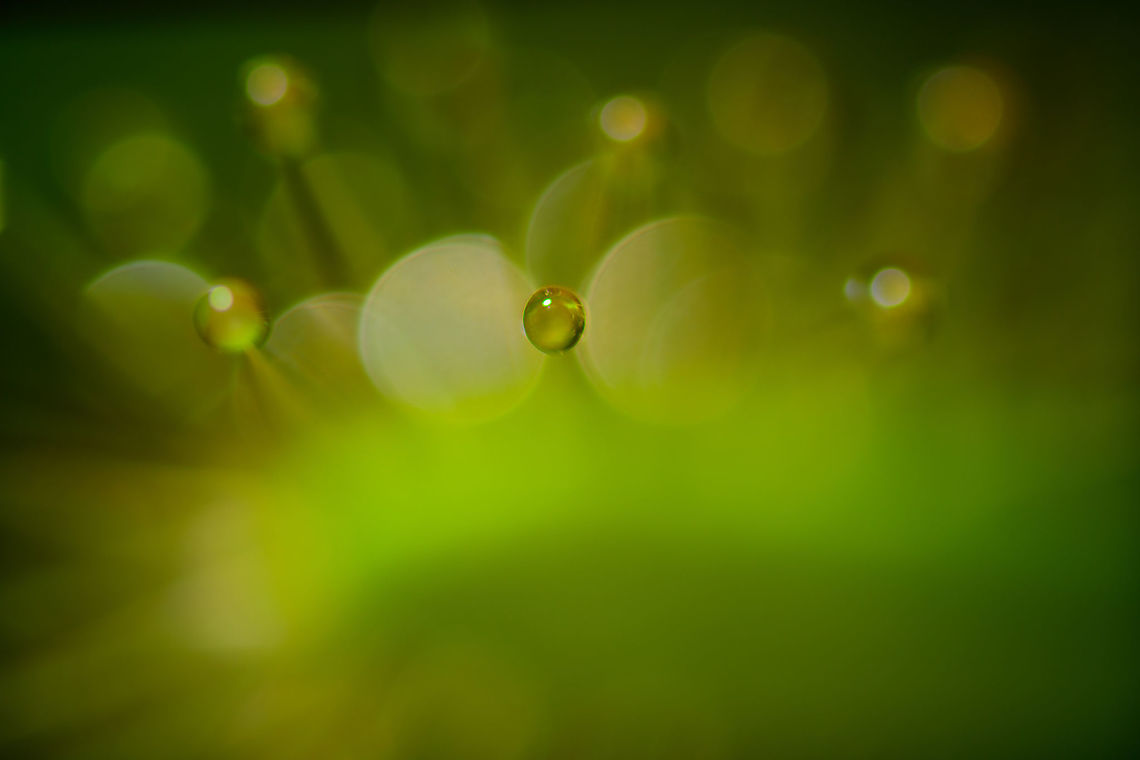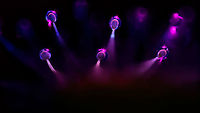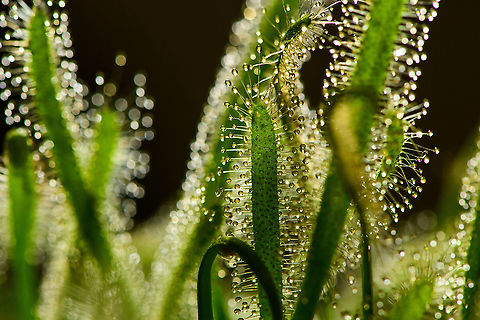 Promoted
Promoted
Cape Sundew leaf - single glandular hair, Heesch, Netherlands
Besides revealing hidden details via magnification, the other super power of macro photography is the ability is to create something from nothing. Meaning, control over composition and light.
I'd like to use the example of a situation I was in a few years ago during remote travel. In a small boat, with dark monkeys high up in the canopy. Against the light. The photo was going to be shit no matter what I do. I don't control the monkey's position, hardly my own position, and definitely not the direction of light. No control, and very few composition options.
Compare this to something as simple as a small flower growing on your lawn. It has thousands of hidden compositions. You can take a shot from any angle you like, and the result will be dramatically different. If you don't like the direction of light, you just move to the opposite side. The simplest of subjects has a nearly endless amount of creative options. Do it right, and you can literally create a master piece from "nothing".
Such is the promise and fun of macro photography. Yet for 1:1 macro, as you grow in experience, there is still somewhat of a visual relation to what your naked eye can still see, and the composition you had in mind.
With this photo I want to demonstrate that extreme macro, in this case 5:1, is different. Working (far) below 1mm in subject details, your naked eye cannot really plan a composition the way you're used to. It's simply too small to see with your own eyes. Instead, you "discover" a composition. Pretty much by accident.
In this case, I'm moving around a potted plant (sundew) in front of a 5 x macro lens and checking on a monitor what it does. The slightest move changes everything. So you move and rotate and keep checking, and sometimes you find a surprise composition you absolutely could not have planned for, as you just cannot see it.
In this case, I liked the idea of a single glandular hair coming at the viewer, and it being the only thing in focus. The idea is better than the actual execution though, I wish it was sharper.
UV version of a somewhat similar abstract composition:


''Drosera capensis'', commonly known as the Cape sundew, is a small rosette-forming carnivorous species of perennial sundew native to the Cape in South Africa. Because of its size, easy to grow nature, and the copious amounts of seed it produces, it has become one of the most common sundews in cultivation.

comments (3)